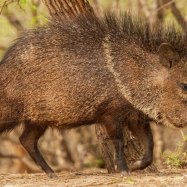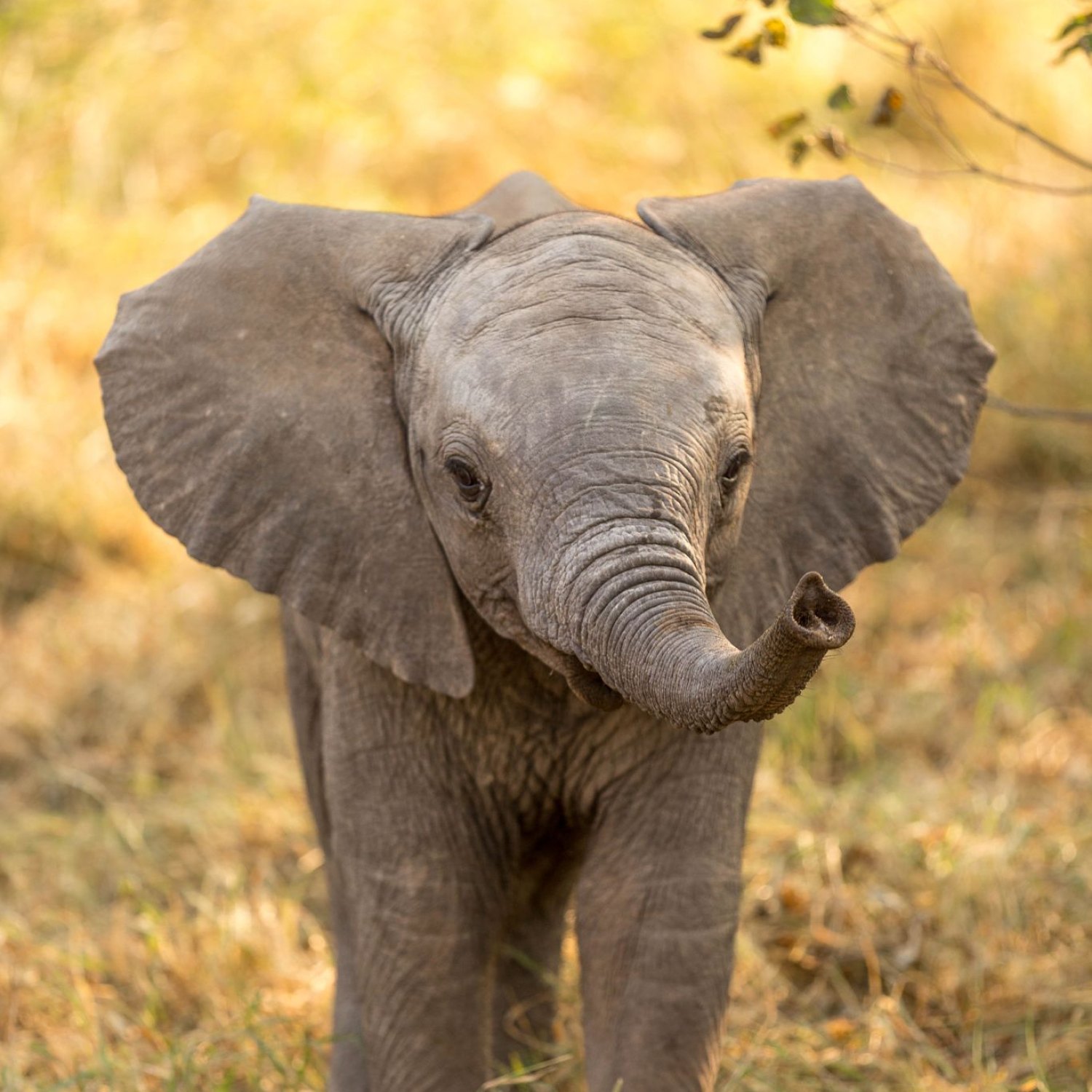
Elephant
6-7 meters
Elephants are majestic creatures that can reach a whopping 6-7 meters in length. They belong to the Elephantidae family and can be found in various regions in Africa. These gentle giants have a large and robust body shape, making them impressive animals to behold. They are sometimes known as the gentle giants of the animal kingdom, and their intelligence and social behaviors make them fascinating creatures to observe in their natural habitats.
Animal Details Summary:
Common Name: African Elephant
Kingdom: Animalia
Habitat: Savannas, forests, and grasslands
The Majestic African Elephant: A Symbol of Strength and Intelligence
The African Elephant, scientifically known as Loxodonta africana, is one of the most magnificent creatures on the planet. Also referred to as the African Elephant, it belongs to the Animalia kingdom, Chordata phylum, and Mammalia class. As a member of the Proboscidea order, Elephantidae family, and the largest terrestrial mammal, this animal is truly a wonder of nature.Found commonly in savannas, forests, and grasslands, the African Elephant's habitat ranges across various regions in Sub-Saharan Africa Elephant. It is also native to many countries on the African continent, making it a prominent part of its ecosystem. The elephant's name is a combination of the Greek words "loxos," which means oblique, and "donta," meaning tooth, referring to the animal's tusks.
Featuring a large and robust body shape, the African Elephant can grow up to an impressive length of 6-7 meters, making it one of the largest land animals on the planet. However, what truly sets this animal apart is not just its size, but its intelligence and unique characteristics that have captivated humans for centuries.
An Elephant's Diet and Feeding Habits
As a herbivorous animal, the African Elephant feeds on a diet primarily composed of grass, leaves, and fruits. However, their feeding habits are not limited to just plants, as they also consume bark, roots, and even tree branches when necessary. An adult elephant can consume up to 300 pounds of food per day, making it one of the largest consumers of vegetation in its habitat.Their feeding habits are also essential for maintaining the balance of their ecosystem. As they travel long distances in search of food, they help disperse seeds from plants, which helps with the growth of new vegetation Eared Grebe. This makes them a critical part of the cycle of life in the African savannas, forests, and grasslands.
The African Elephant's Grey Coloration and Unique Features
One of the distinguishing features of the African Elephant is its grey coloration, which is often associated with strength and wisdom. This color comes from the animal's thick skin, which serves as protection against the harsh elements of its habitat.The elephant's skin can reach a thickness of up to one inch, protecting it from extreme temperatures and insect bites. They also have a sparse covering of coarse hair on their bodies, which helps to regulate their body temperature. Along with its massive tusks, these unique features make the African Elephant a truly remarkable and formidable creature.
Surviving in the African Savannas
The African Elephant's natural habitat and geographical distribution across various regions in Africa highlight its ability to adapt to different environments. In fact, due to this animal's intelligence and resilience, it can survive in a variety of habitats, ranging from dry grasslands to dense forests.Their impressive size and strength also make them a dominant species in the savannas, allowing them to thrive alongside other creatures. However, their habitat and existence are at risk due to poaching and habitat destruction, making conservation efforts crucial for preserving these magnificent animals for future generations.
The Importance of Elephants to African Culture and Ecosystems
For centuries, African elephants have held a significant cultural and spiritual significance for people living on the continent. They are often considered symbols of power, strength, and intelligence, and their presence in many African traditions and ceremonies highlights their importance to various cultures.Moreover, elephants play a crucial role in maintaining the balance of their ecosystem. As herbivores, they help improve the quality of soil, promote the growth of vegetation, and provide other animals with food and shelter. These elephants also rely on water sources such as rivers and lakes, which, in turn, support a diverse array of wildlife.
The Threat of Extinction and Conservation Efforts
Despite their significance to African culture and ecosystems, African Elephants have faced severe threats to their survival, primarily due to poaching for their valuable tusks. Strict laws and conservation efforts have helped decrease the trade of ivory in recent years. However, the battle to save these creatures from extinction is ongoing.Organizations and individuals around the world are taking measures to protect and conserve this iconic species. Efforts such as anti-poaching initiatives, better law enforcement, and sustainable tourism are crucial to the African Elephant's conservation. Furthermore, innovative projects, such as drones being used to monitor and protect elephant populations, are also making a positive impact.
Conclusion
In conclusion, the African Elephant stands as a symbol of strength and intelligence, making it a cherished animal in our natural world. From their impressive size and unique features to their importance to African cultures and ecosystems, these creatures continue to fascinate and amaze people around the world.However, their survival is in danger, making it crucial for us to take steps to protect and conserve this iconic species. By understanding and celebrating the African Elephant's impressive qualities, we can work towards ensuring that these magnificent creatures continue to roam the African savannas, forests, and grasslands for generations to come.

Elephant
Animal Details Elephant - Scientific Name: Loxodonta africana
- Category: Animals E
- Scientific Name: Loxodonta africana
- Common Name: African Elephant
- Kingdom: Animalia
- Phylum: Chordata
- Class: Mammalia
- Order: Proboscidea
- Family: Elephantidae
- Habitat: Savannas, forests, and grasslands
- Feeding Method: Herbivorous
- Geographical Distribution: Sub-Saharan Africa
- Country of Origin: Multiple countries in Africa
- Location: Various regions in Africa
- Animal Coloration: Grey
- Body Shape: Large and robust
- Length: 6-7 meters
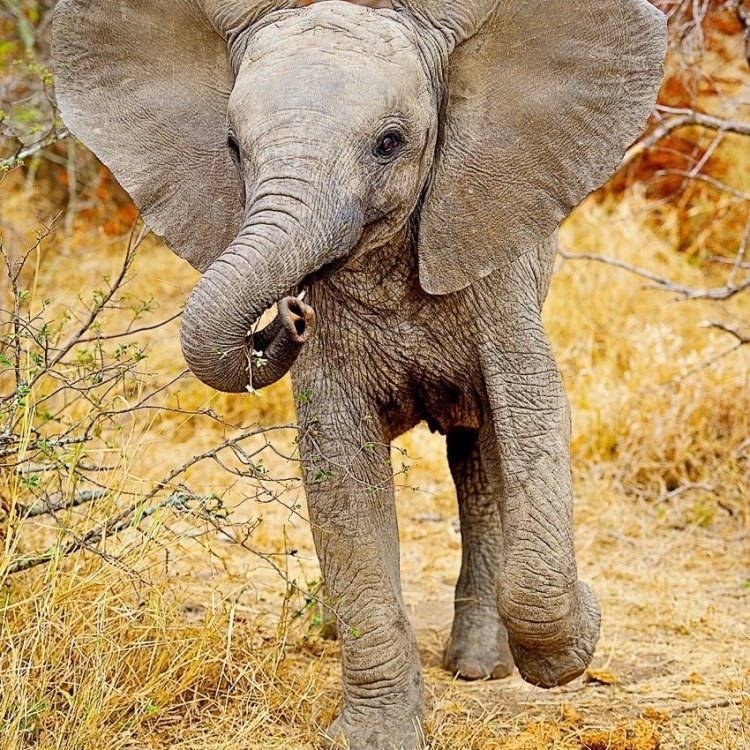
African Elephant
- Adult Size: Up to 3.3 meters at the shoulder, weighing up to 6,000 kilograms
- Average Lifespan: Up to 70 years
- Reproduction: Sexual
- Reproductive Behavior: Males compete for mating rights with females
- Sound or Call: Trumpeting
- Migration Pattern: Seasonal migrations based on food and water availability
- Social Groups: Matriarchal groupings led by a dominant female
- Behavior: Highly social and intelligent, known for their complex communication and problem-solving abilities
- Threats: Habitat loss, poaching, and human-wildlife conflict
- Conservation Status: Vulnerable
- Impact on Ecosystem: Key roles in shaping their environment through feeding patterns and seed dispersal
- Human Use: Tourism, ivory trade (illegal), work animals
- Distinctive Features: Long trunk, large ears, tusks (in both males and some females)
- Interesting Facts: Elephants are the largest land animals, with the African elephant being larger than the Asian elephant. They have a highly developed social structure and are known for their close family bonds and mourning rituals. Elephants play a crucial role in maintaining the balance of ecosystems they inhabit.
- Predator: Adult elephants have no natural predators except for humans.
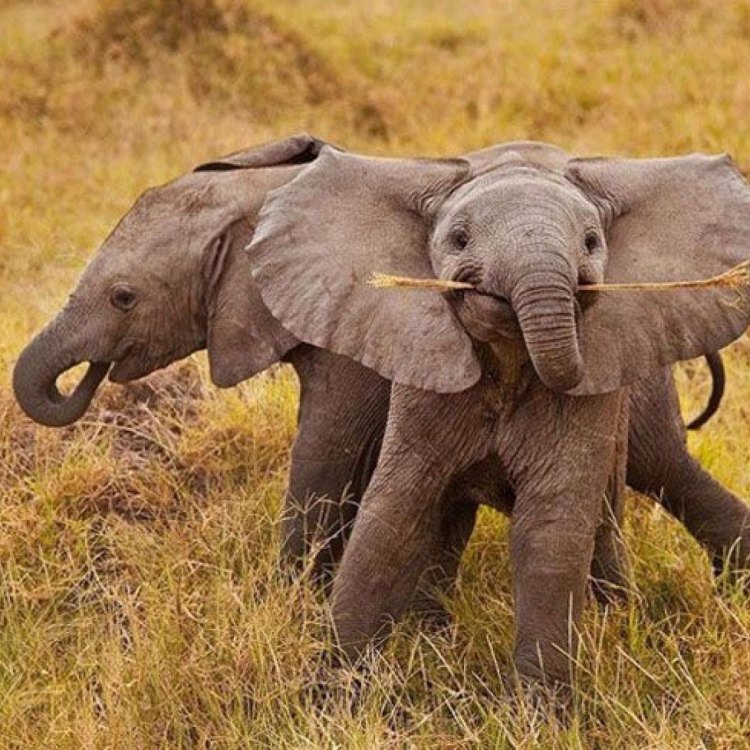
Loxodonta africana
The Magnificent Elephant: A Symbol of Strength, Intelligence, and Conservation
As the sun rises over the savannah, a massive figure emerges from the grasslands. With each step, the ground trembles under its enormous weight. Its long trunk swings from side to side, as it trumpets through the air. The elephant, with its distinctive features and remarkable behavior, has captured the hearts and minds of humans for centuries PeaceOfAnimals.Com. From being worshiped in ancient civilizations to being exploited for human gain, these gentle giants have a complex and fascinating history. In this article, we will take a closer look at the unique features and traits of the magnificent elephant.Adult elephants can grow up to 3.3 meters at the shoulder and weigh up to 6,000 kilograms, making them the largest land animals on earth. They are even bigger than their close relative, the mammoth, which became extinct thousands of years ago. The average lifespan of an elephant is up to 70 years, with some individuals living even longer in captivity. In the wild, they live in social groups led by a dominant female, known as the matriarch. This female is responsible for leading the group to food and water sources, as well as making critical decisions for the herd's survival.
While reproduction in elephants is sexual, it is not a simple process Eastern Barred Bandicoot. Males must compete for mating rights with females, and only the strongest and most dominant will be chosen to father offspring. This behavior is known as sexual selection and ensures that only the fittest genes are passed down to the next generation.
One of the defining features of elephants is their distinctive sound or call – trumpeting. This loud and unique sound can be heard from miles away and is used by elephants to communicate with each other. Trumpeting can signal a warning, a greeting, or even a call for help. Elephants also use other vocalizations, including purring, rumbling, and bellowing, to convey different messages.
Migration is a part of the life of many animals, and elephants are no exception. These magnificent creatures undertake seasonal migrations based on food and water availability. During the dry season, they may travel long distances in search of water, while the rainy season brings an abundance of food, causing them to settle in one area for an extended period.
The behavior of elephants is another aspect that sets them apart from other species. They are highly social and intelligent animals, with complex communication and problem-solving abilities. Elephants have been observed using sticks to scratch hard-to-reach places, and they also have the ability to recognize themselves in a mirror – a trait that is rare amongst animals.
Despite their massive size and strength, elephants are still vulnerable to a range of threats, primarily caused by human activities. Habitat loss due to urbanization and agriculture, as well as poaching for their ivory tusks, are the main reasons for their declining population. Elephants are also involved in human-wildlife conflicts, as they often come into conflict with farmers over land and resources.
As a result, elephants are currently classified as vulnerable on the International Union for Conservation of Nature (IUCN) Red List, with a decreasing population trend. Conservation efforts are ongoing, with a focus on protecting their habitats, reducing human-elephant conflicts, and cracking down on the illegal ivory trade.
But why should we care about the conservation of elephants? What impact do they have on their ecosystems? The answer lies in their distinctive features and behavior. Elephants play a crucial role in shaping their environment through their feeding patterns and seed dispersal. As they roam through the forests and grasslands, they create pathways and clearings, which help other animals move through the landscape. Their dung acts as a natural fertilizer, enriching the soil and promoting plant growth. Without elephants, some species of plants and animals would struggle to survive, ultimately leading to a domino effect that could have drastic consequences for entire ecosystems.
In addition to their importance in the ecosystem, elephants also have significant cultural and economic value. In many countries, they are a major tourist attraction, bringing in much-needed revenue for local communities. They are also used as work animals in various industries, such as logging and transportation. However, this often involves mistreatment and cruelty towards these intelligent creatures.
The distinctive features of the elephant, such as its long trunk, large ears, and tusks, make them easily recognizable. While the trunk is an essential tool for feeding, drinking, and breathing, the large ears serve to regulate their body temperature. But perhaps the most iconic feature of the elephant is its tusks. These elongated incisors are used for digging, foraging, and self-defense. Sadly, these tusks have also been the primary reason for their exploitation by humans. The illegal ivory trade has caused a significant decline in elephant populations, with an estimated 20,000 elephants killed each year for their tusks.
Besides being the largest land animals, elephants also have a rich cultural and historical significance. In many cultures, they are seen as symbols of strength, wisdom, and loyalty. In ancient civilizations such as Egypt and India, elephants were revered and considered sacred. They were also used in battles and as symbols of power by kings and rulers.
One of the most interesting facts about elephants is their complex social structure and close family bonds. These animals have strong emotional connections and live in a matriarchal society, where the females care for the young and pass down their knowledge and wisdom to the next generation. They have been observed mourning the death of a family member, exhibiting behaviors such as covering the deceased with leaves and staying with the body for days.
Unlike most animals, adult elephants have no natural predators except for humans. However, in some cases, young elephants may fall victim to predator attacks, such as lions, tigers, and crocodiles. This is another reason why the conservation of elephants is crucial – to maintain the balance of the ecosystem and protect these magnificent creatures from extinction.
In conclusion, elephants are an integral part of our natural world and a symbol of strength, intelligence, and conservation. Their distinctive features, behavior, and impact on ecosystems make them a fascinating and essential species to study and protect. Through conservation efforts and responsible tourism, we can ensure that future generations can continue to marvel at these magnificent creatures, and they can thrive in their natural habitat for years to come.
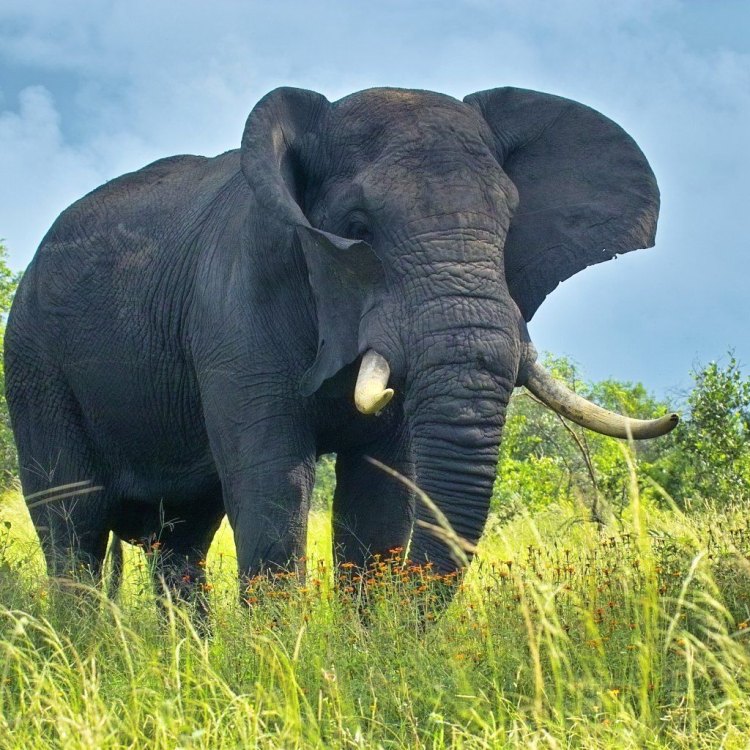
The Majestic African Elephant: A Symbol of Strength and Intelligence
Disclaimer: The content provided is for informational purposes only. We cannot guarantee the accuracy of the information on this page 100%. All information provided here may change without prior notice.











